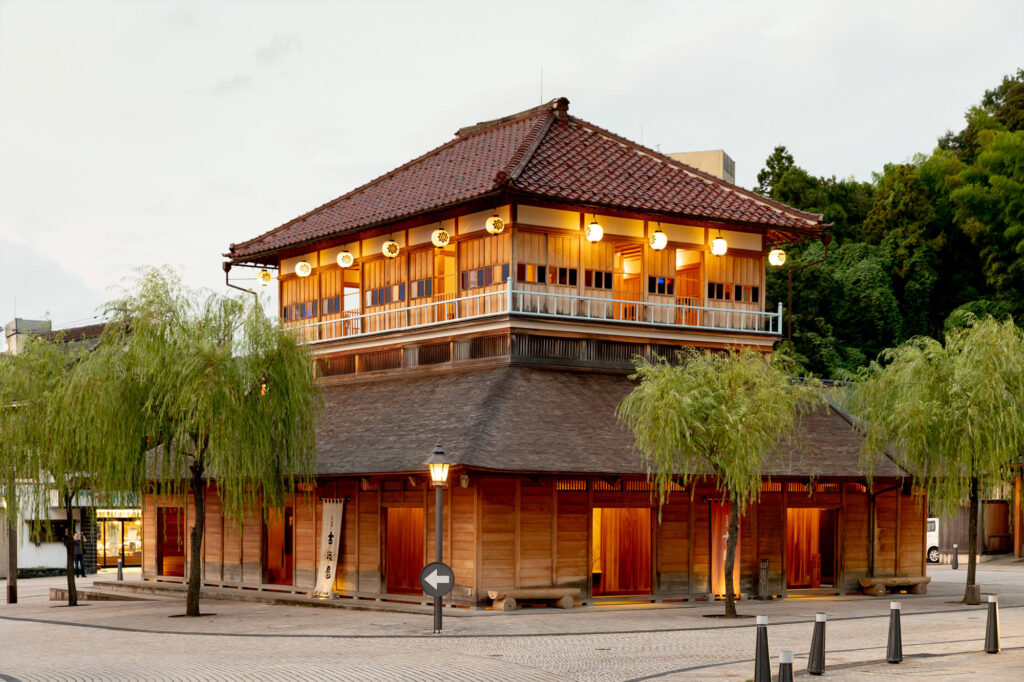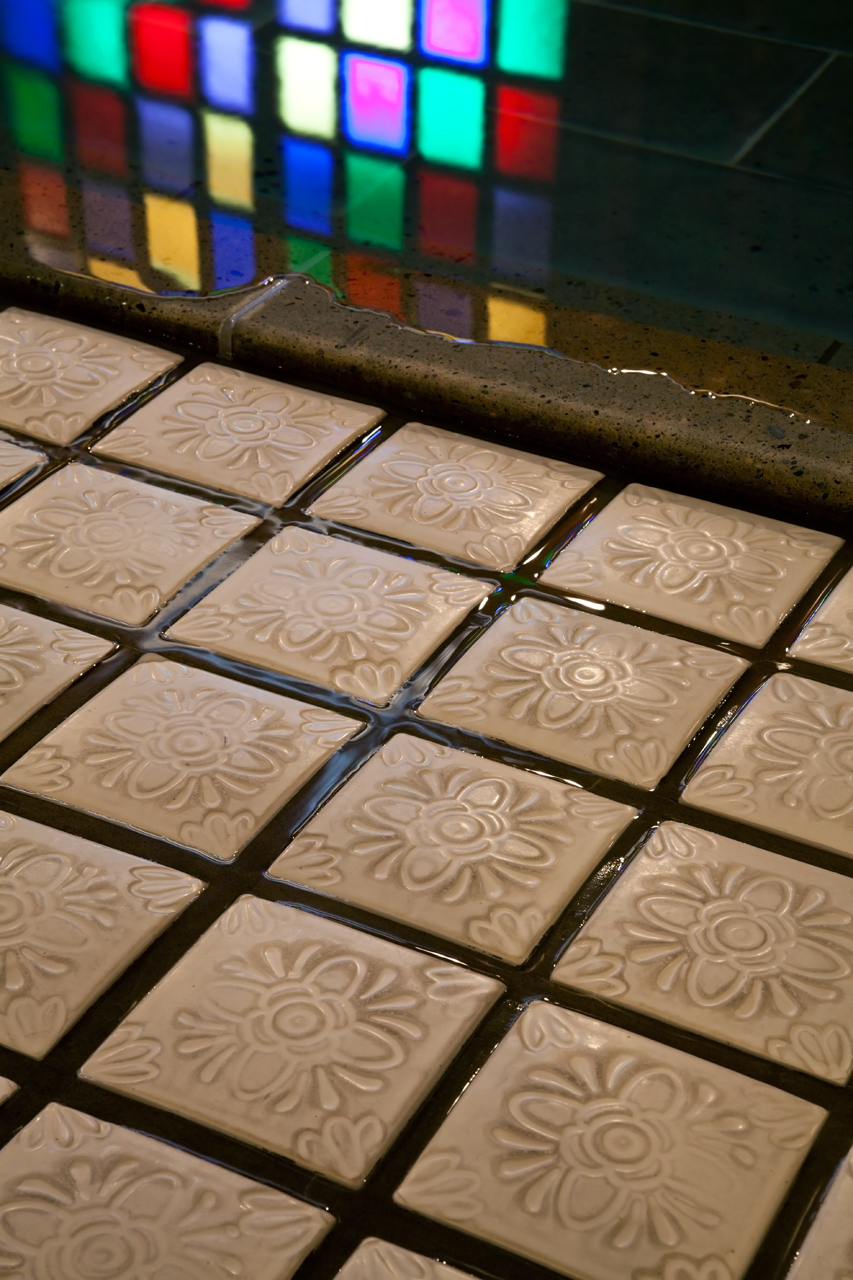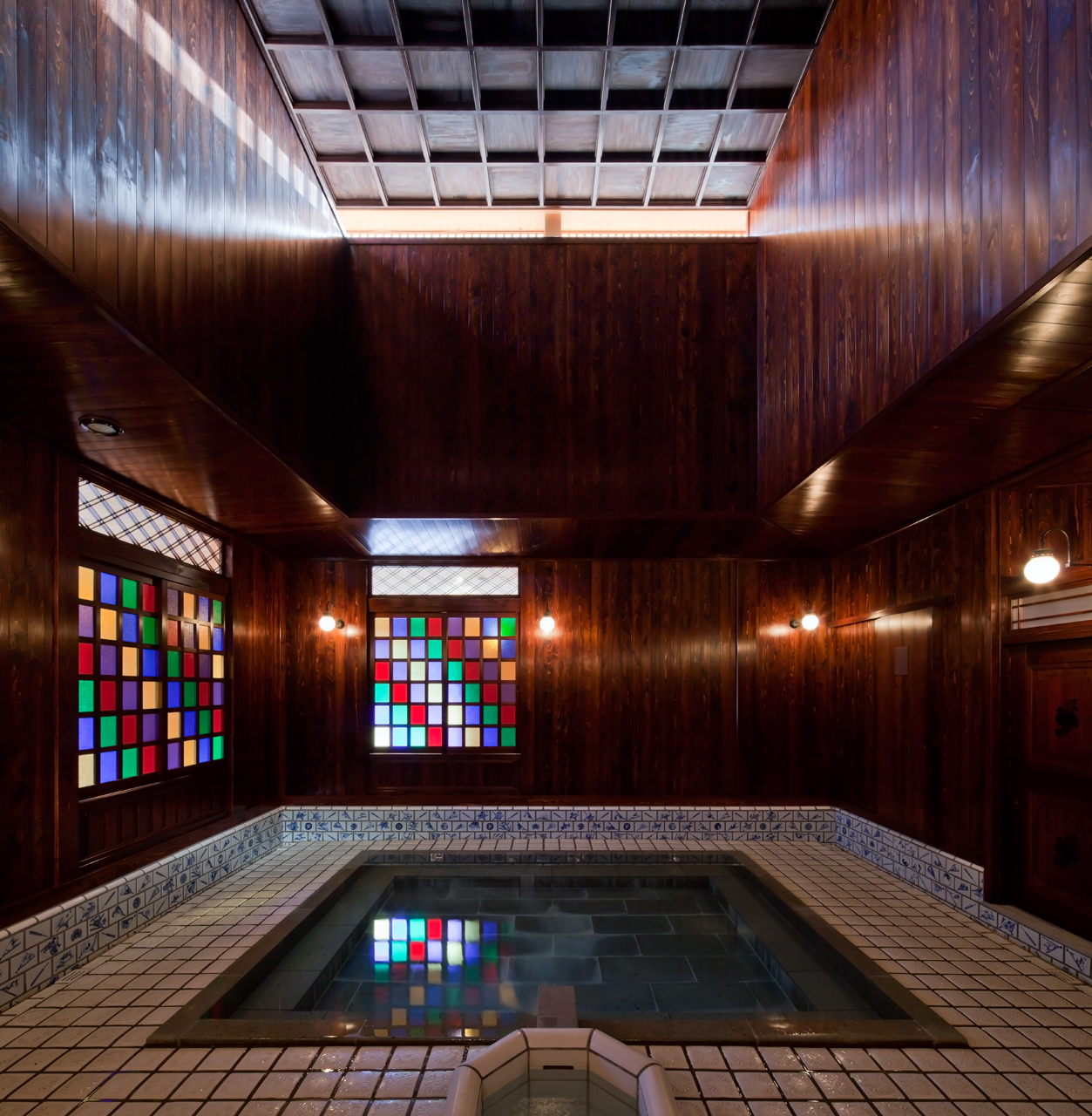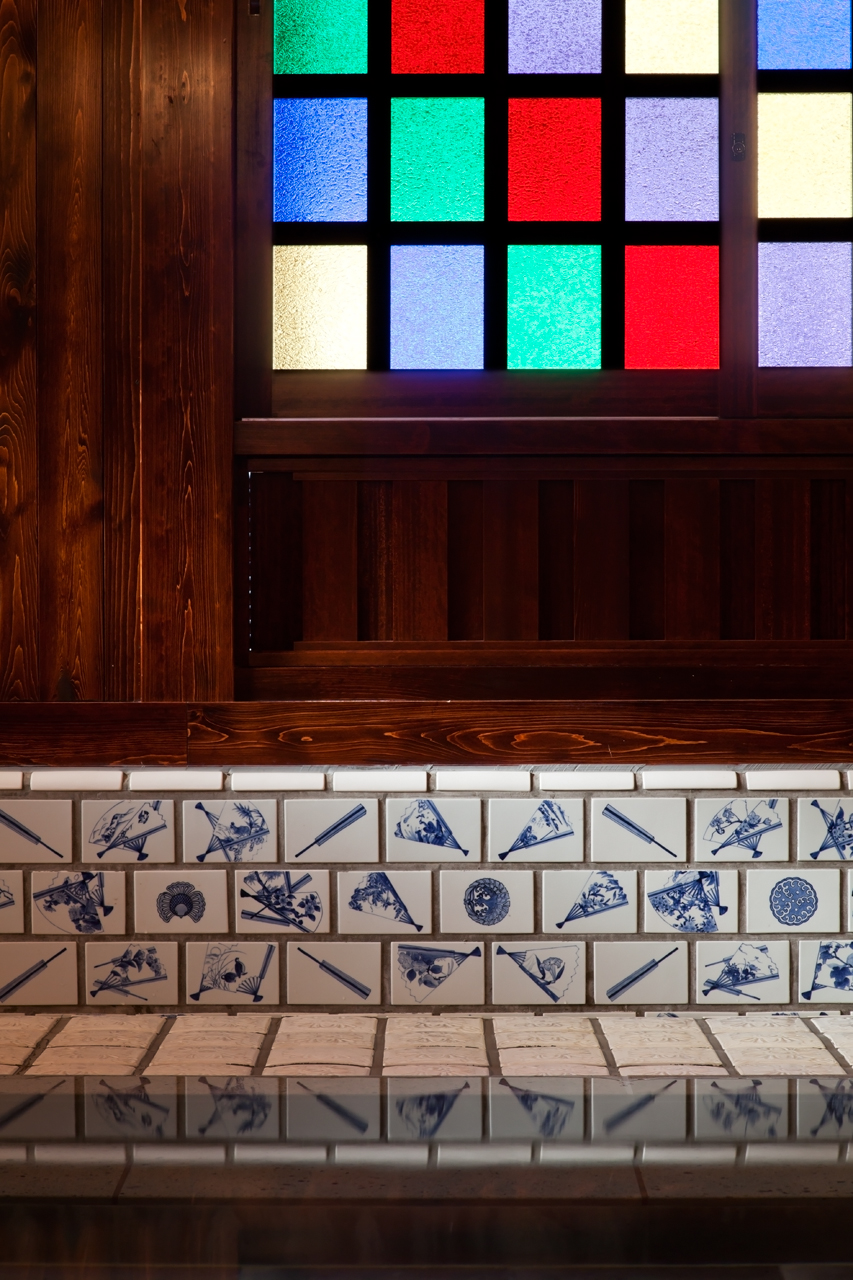1.2 How to bath in hot springs in Japan
Naked men and women, bare breasted or bare chested, are required to make use of a small towel to cover genitals when walking from the (required) showers or wooden buckets of water to the hot springs. You clean up before and after the bath with soaps and shampoos; in the bath you simply soak. Once you are immersed in the hot springs, put the towel, folded neatly, on your head or beside the pools. There you are, up to your neck, eyes closed, maybe whispering with a friend, trying as best you can not to “be one with the water,” or “taking the cure,” but really and truly feeling as close to nature as you can. Many of the baths, at onsen and in communities, are bordered by rocks and in forests; surrounded by open air, the sounds of birds, breezes through trees, and there are few things more sensational than immersion in the water while snow falls or heavy rain pounds down. (page 90)
Sachiko: Today, people usually wash with shampoo and soap, rinse, and then enter the bath and soak. In the past, the way of bathing was different. People did not use soap and shampoo, they simply rinsed themselves with hot spring water before immersing their bodies up to their necks in hot spring water. They basically warmed up until their necks. This way of bathing is called Yuami湯あみ. It is rare nowadays, but Yamashiro 山代温泉’s Kosoyu 古総湯 offers this kind of bathing experience. Have you been to Kosoyu, the public bath in the middle of Yamashiro Onsen?
Scott: No, this is new to me!

Sachiko: Soyu総湯 has been a symbol of Yamashiro hot spring since ancient times. Yamanaka山中温泉, Katayamazu 片山津温泉 also have soyu, almost every hot spring town has it, but “Kosoyu” is unique in our region of Kaga加賀 and it is a new symbol of Yamashiro Onsen. ‘Ko古’ means ‘old’, so ‘Kosoyu’ means ‘old public bath’. It was rebuilt about fifteen years ago and it is a reproduction of the Yamashiro’s hot spring in the Meiji明治 era (1868-1912), the building and the Yuami way of bathing is the same as 150 years ago. There is no shower or tap, you rinse yourself taking the water from the bathtub using a bucket before entering the bath to warm your body up to your neck.
The interior of the Kosoyu is decorated with the best of local handicrafts. For example, do you know the porcelain artist Suda Seika須田菁華? His grandfather Suda Seika II put the tiles in the original Kosoyu in Meiji era and now Suda Seika IV made the tiles for the Kosuyu reproducing the old design. There are also other decorations as painted lacquerware, and the walls are covered with kutani-yaki 九谷焼 tiles, all of them typical of this area.



In addition, just like in the Meiji era, there is a room on the second floor, and after the hot spring, you can relax there. In the past, many people enjoyed Japanese board game called shogi将棋, which is similar to Western chess. My husband Kazunari says that his grandfather used to spend a lot of time there playing with his friends!
Going back to Yuami: actually, that is not an old way of bathing. In the evening I wash my face and hair using soap or shampoo, but in the morning, I don’t use any soap, I bath Yuami style. Because alkakine hot spring water takes off skin oil and makes the skin clean, it’s like a natural cleansing and lotion, so there is no need to use soap. I rinse myself using a bucket and soak in onsen to warm my body up to my neck every day.
Scott: Ah, that is so nice!
Sachiko: Yes. It is also very different from taking a shower! Scott, I would like to know how do you prepare first time visitors to Japan to an onsen experience?
Scott: I try to do describe the process step by step, to show that there is a way to enter the water, there is a way to leave the water, there is a way to behave around other people in the water, and so on. And also, to be honest, some friends may have a tattoo, so I tell them that they have to tell the staff at the ryokan and ask: “Is it okay? Is it okay if I come there with a tattoo?” Maybe it is not okay, maybe it is… You have to be honest about it, you have to tell them before you show up because some Japanese guests may not like it. It is not clear, some ryokan they don’t care but you have to tell them this. There are cultural rules, they are just rules, right?
Sachiko: Yes, Japanese onsen culture. There are rules, but anyone can learn. Regarding tattoos: Traditionally, in Japan tattoos showed an affiliation with some kind of organized crime, that is why some Japanese guests may feel uncomfortable or even scared in seeing tattoos. Anyway, at Beniya Mukayu, guests can enjoy the outdoor hot spring bath in the privacy of their room; relatively small and pretty tattoos are not an issue in the communal baths. Scott: Yes. Overall Japanese onsen rules are not difficult, they are fair and everybody has to obey them, not just you. As I said, when I have been to hot spring inns in Austria and in Switzerland, people know what they are, and there is a long tradition of hot springs inns in Europe, to be sure, fancy and famous 19th century ones. The big differences are that it’s men and women together and often men and women either wearing bathing suits or naked, but it is not separated. It’s not women only and men only (though some now have a women-only time). People are quite comfortable, in fact there is one hot springs inn I go to every year in Therme Vals in Switzerland called 7132 Therme, they worked with two Japanese architects, Tadao Ando安藤忠雄 and Kengo Kuma隈研吾, both of whom designed some of the rooms. I stay in an Ando room with a view of pastures and Alps, and it’s the best of both worlds, Japanese and Swiss.
In addition, just like in the Meiji era, there is a room on the second floor, and after the hot spring, you can relax there. In the past, many people enjoyed Japanese board game called shogi将棋, which is similar to Western chess. My husband Kazunari says that his grandfather used to spend a lot of time there playing with his friends!
Going back to Yuami: actually, that is not an old way of bathing. In the evening I wash my face and hair using soap or shampoo, but in the morning, I don’t use any soap, I bath Yuami style. Because alkakine hot spring water takes off skin oil and makes the skin clean, it’s like a natural cleansing and lotion, so there is no need to use soap. I rinse myself using a bucket and soak in onsen to warm my body up to my neck every day.
Scott: Ah, that is so nice!
Sachiko: Yes. It is also very different from taking a shower! Scott, I would like to know how do you prepare first time visitors to Japan to an onsen experience?
Scott: I try to do describe the process step by step, to show that there is a way to enter the water, there is a way to leave the water, there is a way to behave around other people in the water, and so on. And also, to be honest, some friends may have a tattoo, so I tell them that they have to tell the staff at the ryokan and ask: “Is it okay? Is it okay if I come there with a tattoo?” Maybe it is not okay, maybe it is… You have to be honest about it, you have to tell them before you show up because some Japanese guests may not like it. It is not clear, some ryokan they don’t care but you have to tell them this. There are cultural rules, they are just rules, right?
Sachiko: Yes, Japanese onsen culture. There are rules, but anyone can learn. Regarding tattoos: Traditionally, in Japan tattoos showed an affiliation with some kind of organized crime, that is why some Japanese guests may feel uncomfortable or even scared in seeing tattoos. Anyway, at Beniya Mukayu, guests can enjoy the outdoor hot spring bath in the privacy of their room; relatively small and pretty tattoos are not an issue in the communal baths. Scott: Yes. Overall Japanese onsen rules are not difficult, they are fair and everybody has to obey them, not just you. As I said, when I have been to hot spring inns in Austria and in Switzerland, people know what they are, and there is a long tradition of hot springs inns in Europe, to be sure, fancy and famous 19th century ones. The big differences are that it’s men and women together and often men and women either wearing bathing suits or naked, but it is not separated. It’s not women only and men only (though some now have a women-only time). People are quite comfortable, in fact there is one hot springs inn I go to every year in Therme Vals in Switzerland called 7132 Therme, they worked with two Japanese architects, Tadao Ando安藤忠雄 and Kengo Kuma隈研吾, both of whom designed some of the rooms. I stay in an Ando room with a view of pastures and Alps, and it’s the best of both worlds, Japanese and Swiss.





